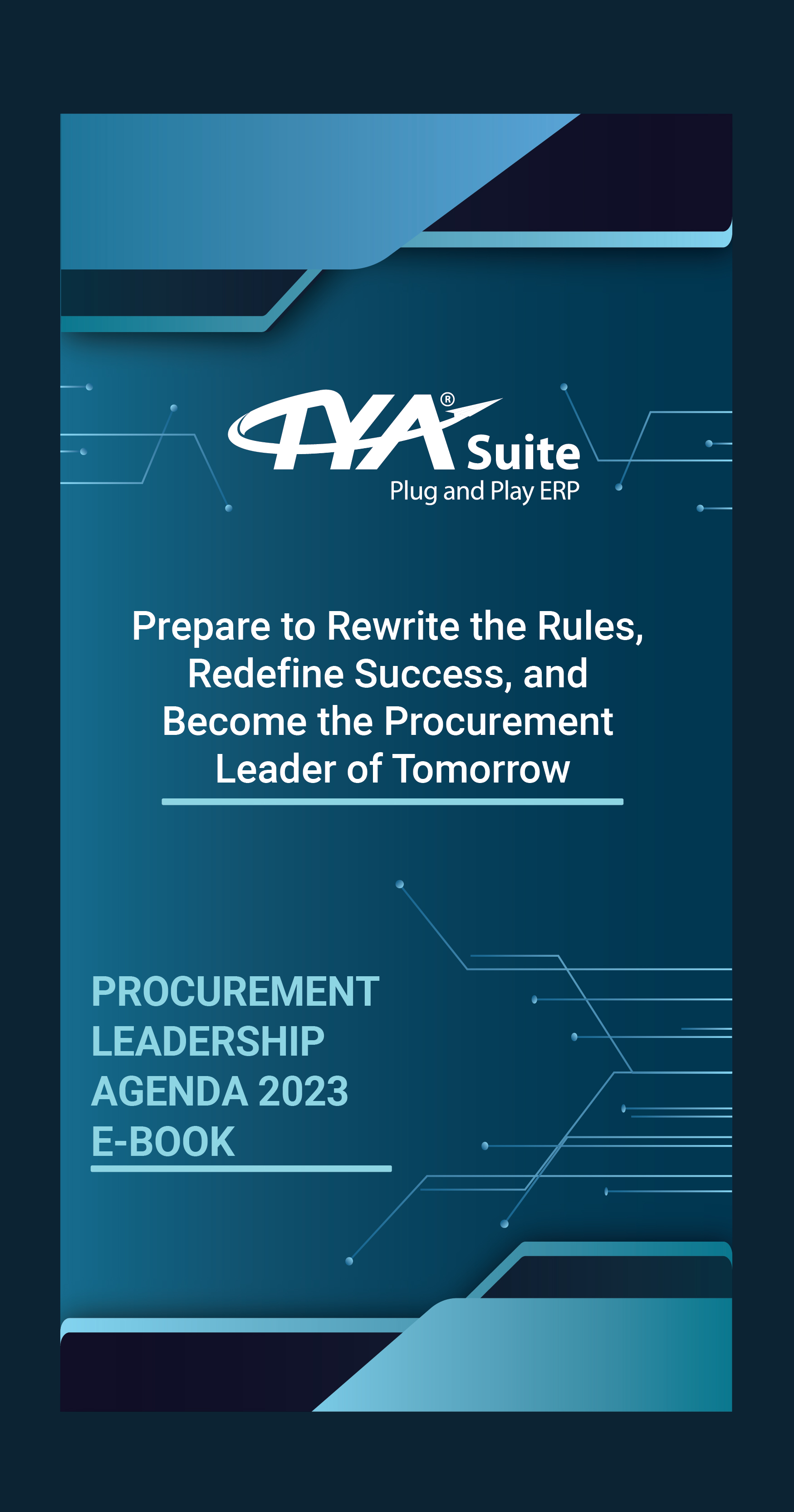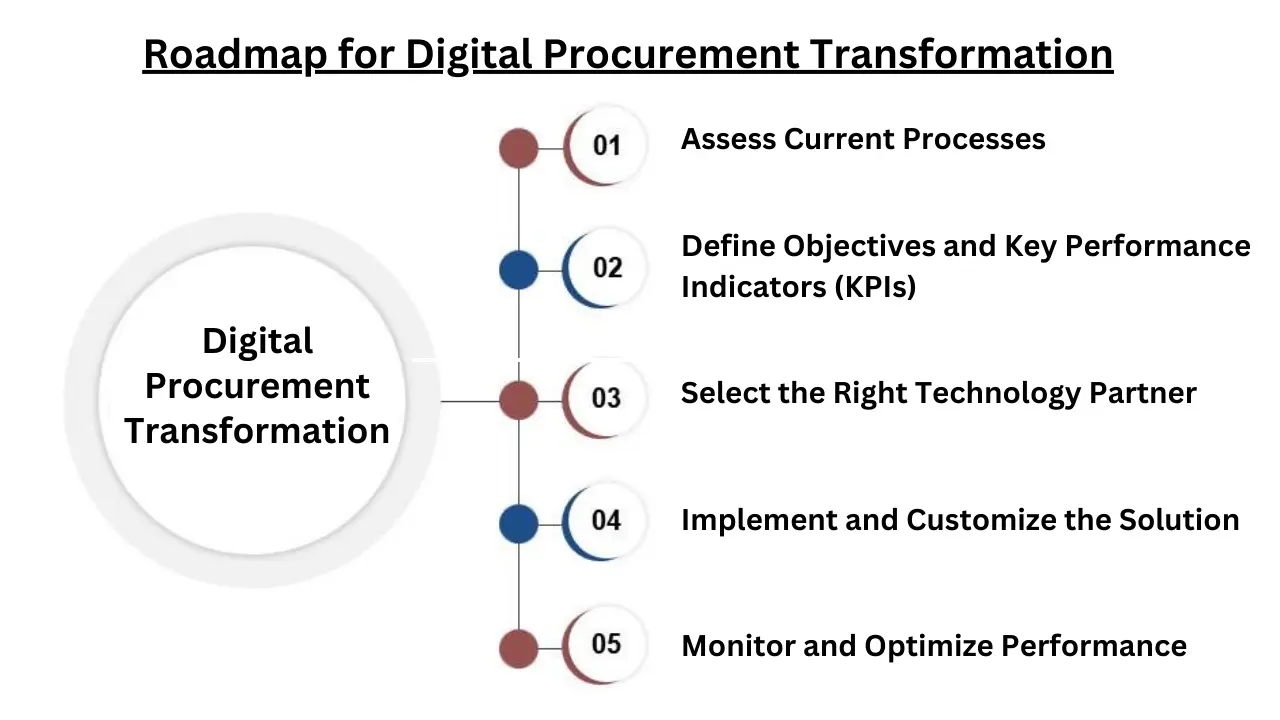


Businesses are continuously looking for methods to improve efficiency, save costs, and simplify processes in the fast-paced corporate world of today. One area that has seen significant innovation in recent years is procurement. With the advent of digital transformation, procurement processes are being revolutionized, leading to increased agility, improved decision-making, and enhanced collaboration throughout the supply chain.
Digital transformation in procurement refers to the integration of digital technologies and data-driven solutions into the procurement process. This involves leveraging technologies such as artificial intelligence (AI), machine learning, data analytics, and automation to optimize every stage of the procurement lifecycle, from sourcing and supplier management to contract negotiation and payment processing.
Embracing digital transformation in procurement offers a myriad of benefits for organizations looking to modernize their operations:
Digital transformation in procurement streamlines manual processes, reducing the time and resources required to complete tasks such as supplier onboarding, purchase order management and invoice processing. Automation eliminates repetitive tasks, allowing procurement professionals to focus on strategic activities that add value to the organization.
By optimizing sourcing strategies, negotiating better contracts, and identifying opportunities for supplier consolidation, digital transformation in procurement helps organizations drive cost savings across their supply chain. Real-time data and analytics enable proactive cost management and risk mitigation, ensuring that companies can make informed decisions to minimize expenses.
Digital transformation in procurement provides greater visibility into the entire procurement process, from requisition to payment. Centralized dashboards and reporting tools offer real-time insights into spending patterns, supplier performance, and compliance metrics, empowering stakeholders to make data-driven decisions and mitigate risks effectively.
Digital transformation in procurement facilitates the cultivation of strategic supplier relationships. By leveraging supplier data and performance metrics, organizations can identify and nurture high-performing suppliers while mitigating risks associated with underperforming ones. This strategic alignment fosters collaboration, innovation, and mutual growth.
Agility and creativity are essential for preserving a competitive edge in the fast-paced corporate environment of today. Digital procurement transformation enables organizations to adapt quickly to changing market conditions, identify emerging trends, and capitalize on new opportunities. By harnessing the power of technology, companies can drive continuous improvement and innovation within their procurement function.

Implementing digital transformation in procurement requires careful planning and execution. The following road map will help organizations navigate the process:
Start by conducting a comprehensive assessment of your existing procurement processes, systems, and technologies. Identify pain points, inefficiencies, and areas for improvement, taking into account stakeholder feedback and industry best practices.
Clearly define your objectives for digital transformation in procurement, whether it's reducing cycle times, improving supplier relationships, or enhancing spend visibility. Establish measurable KPIs to track progress and evaluate the success of your initiatives.
Choose a digital procurement solution provider that aligns with your organization's goals, requirements, and budget. Look for a vendor with a proven track record of success, robust functionality, and scalability to support your future growth.
Work closely with your chosen technology partner to implement and customize the digital procurement solution to meet your specific needs. Ensure that all stakeholders receive adequate training and support to maximize adoption and usage.
Continuously monitor the performance of your Digital transformation in procurement initiatives against established KPIs. Collect feedback from users, suppliers, and other stakeholders to identify areas for improvement and optimization. Iterate and refine your processes to drive ongoing value and innovation.
While the benefits of digital procurement transformation are undeniable, organizations often encounter various challenges during the transition process. Some of the key challenges include:
One of the most significant hurdles in digital procurement transformation is resistance to change among employees. Many individuals may be accustomed to traditional procurement practices and feel apprehensive about adopting new technologies and workflows. Overcoming this resistance requires effective change management strategies, clear communication, and comprehensive training programs to ensure buy-in and participation at all levels of the organization.
Integrating other ERP systems and technologies can pose a significant challenge in digital procurement transformation. Organizations often grapple with legacy systems, siloed data, and compatibility issues when attempting to implement new solutions. Overcoming this challenge necessitates careful planning, investment in interoperable technologies, and collaboration between IT and procurement teams to ensure seamless integration and data exchange.
With the digitization of procurement processes comes heightened concerns about data security and privacy. Organizations must safeguard sensitive information such as supplier contracts, pricing agreements, and payment details from cyber threats and unauthorized access. Implementing robust cybersecurity measures, encryption protocols, and compliance frameworks is essential to mitigate risks and maintain trust among stakeholders.
Digital procurement transformation requires a workforce equipped with the necessary skills and expertise to leverage new technologies effectively. However, many organizations face challenges in recruiting and retaining talent with proficiency in areas such as data analytics, AI, and digital procurement tools. Investing in employee training and development initiatives, fostering a culture of continuous learning, and partnering with educational institutions can help address this skills gap and build a capable procurement workforce for the future.
Navigating the complex regulatory landscape is another challenge in digital procurement transformation, particularly for organizations operating in highly regulated industries. Compliance requirements related to data privacy, anti-corruption, trade regulations, and environmental sustainability add layers of complexity to procurement processes. Ensuring adherence to relevant laws and regulations requires robust compliance management systems, proactive risk assessment, and close collaboration with legal and regulatory experts.
While the challenges of digital procurement transformation may seem daunting, they also present opportunities for innovation, growth, and competitive advantage. By addressing these procurement challenges proactively and adopting a strategic approach to digital procurement transformation, organizations can unlock the full potential of digital transformation in procurement and position themselves for success in the digital age.
Strong leadership support and commitment are essential for driving digital procurement transformation initiatives forward and fostering a culture of innovation and collaboration.
Engaging stakeholders across the organization, including procurement professionals, IT teams, suppliers, and end-users, is critical for ensuring alignment, overcoming resistance, and driving adoption of digital procurement solutions.
Embracing a mindset of continuous improvement enables organizations to identify inefficiencies, optimize processes, and leverage feedback to enhance the effectiveness of digital procurement solutions over time.
By digitizing procurement processes, organizations can drive operational efficiency and achieve substantial cost savings. TYASuite Procurement software enables streamlined procurement workflows, enhanced visibility into spend data, and proactive supplier management, ultimately optimizing resource utilization and mitigating procurement risks.
Digital procurement transformation facilitates data-driven decision-making and fosters agility in response to dynamic market conditions. TYASuite advanced analytics capabilities provide actionable insights into procurement performance, supplier performance, and market trends, empowering organizations to make informed strategic decisions and adapt to evolving business landscapes swiftly.
Compliance with regulatory standards and risk mitigation are paramount considerations in procurement operations. TYASuite Cloud Procurement software offers robust compliance management features, including audit trails, contract management, and supplier due diligence, enabling organizations to uphold regulatory compliance and mitigate procurement-related risks effectively.
Digital transformation in procurement is not just a buzzword, it's a strategic imperative for organizations looking to thrive in today's digital age. By overcoming the challenges, leveraging advanced digital procurement solutions, and embracing change, businesses can unlock new opportunities, drive innovation, and gain a competitive edge in the market. And with TYASuite Procurement Software by their side, the journey towards digital procurement excellence becomes not just achievable but immensely rewarding. So, embark on this transformative journey today and revolutionize your procurement practices for a brighter, more prosperous future.